Islands
At least as early as the Heian Period, Japanese pond gardens contained islands of varying number and scale, and the tradition survived into the modern period. Some of these islands are accessible by means of bridges connecting them to the shore and often to each other, while others stand as isolated units. In some instances a single stone or group of stones rising from the water can be seen as an island, as can stones used in dry landscape gardens. Because islands figure prominently in both the Hindu-Buddhist and Daoist sources of Japanese myths, the symbolic or evocative meaning of garden islands is often discussed, and many texts on historic Japanese gardens will assert that a certain island is intended to represent the Daoist Isle of the Blest (Horai) or one of the islands of the Hindu-Buddhist cosmology, or the island often represented in scenes of the Western Paradise of Amida Buddhism. Whether these interpretations conform to the intentions of the builders of ancient gardens is debatable, but they will be cited when appropriate.
Click thumbnails for larger images and more information.
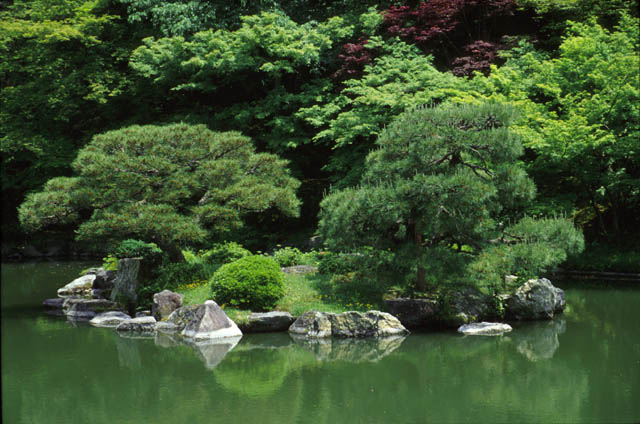
Sento Gosho
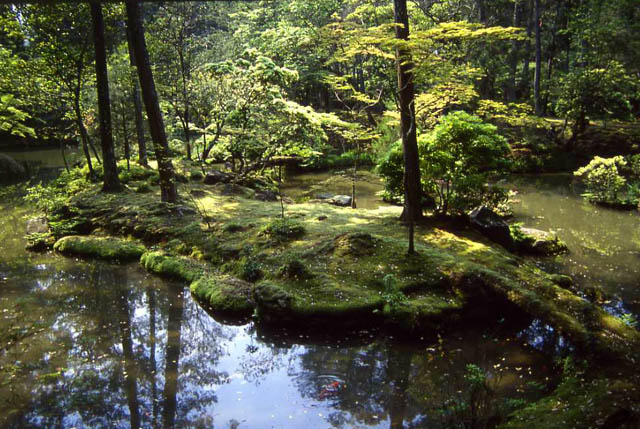
Saiho-ji (1)
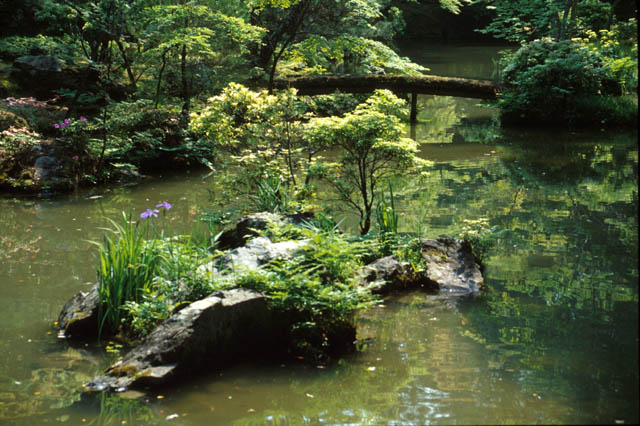
Saiho-ji (2)
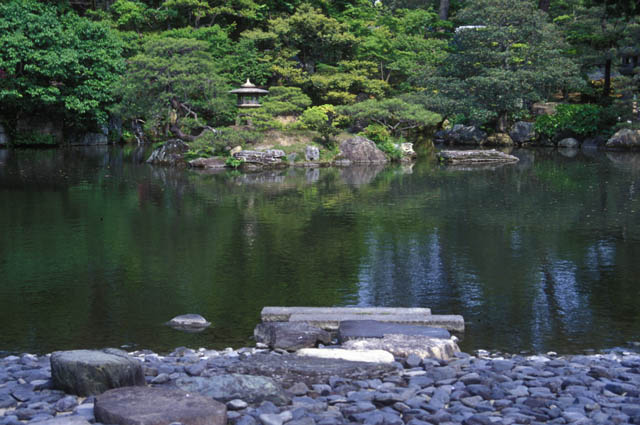
Kyoto Gosho
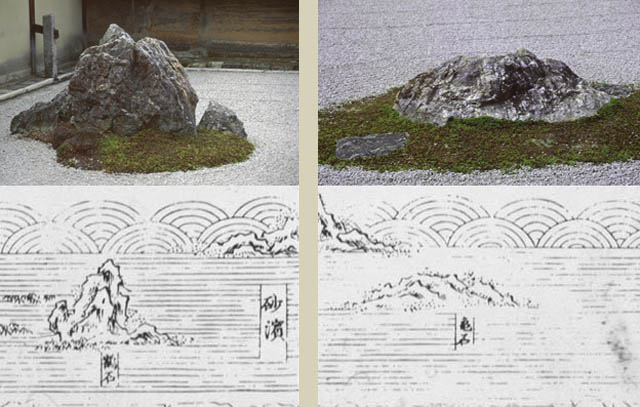
Heron and Turtle
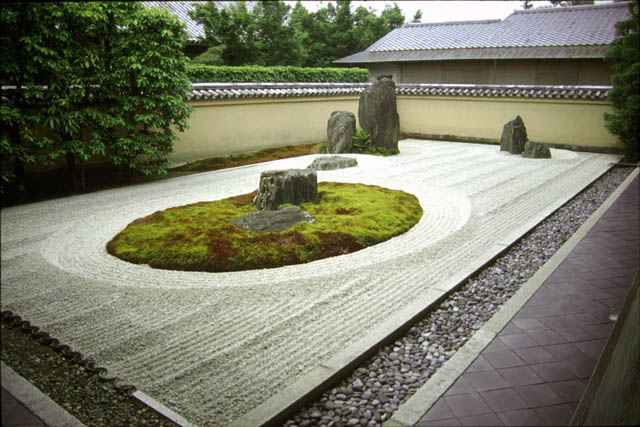
Ryogen-in
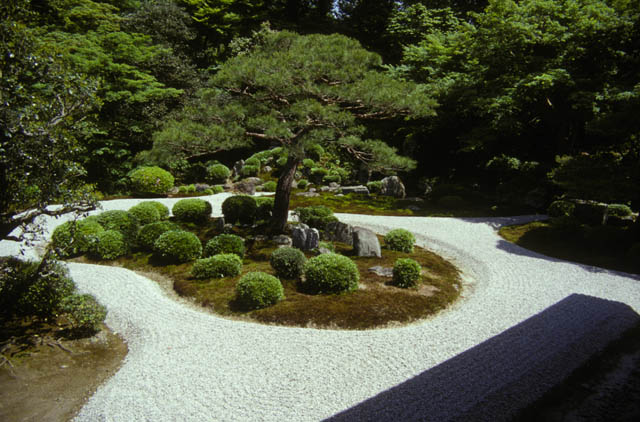
Manshu-in
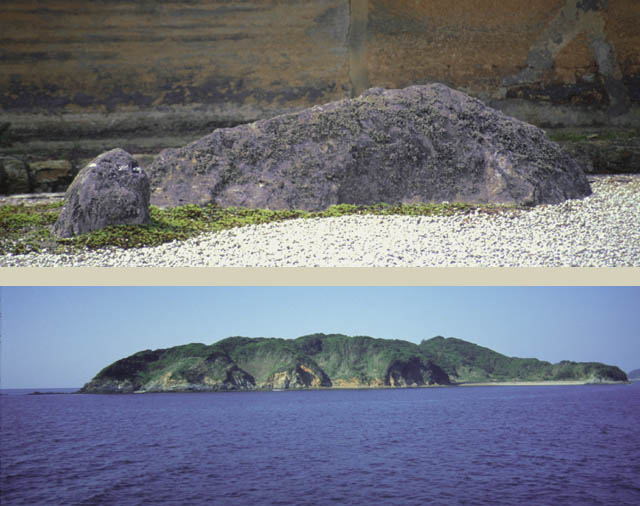
Ryoan-ji
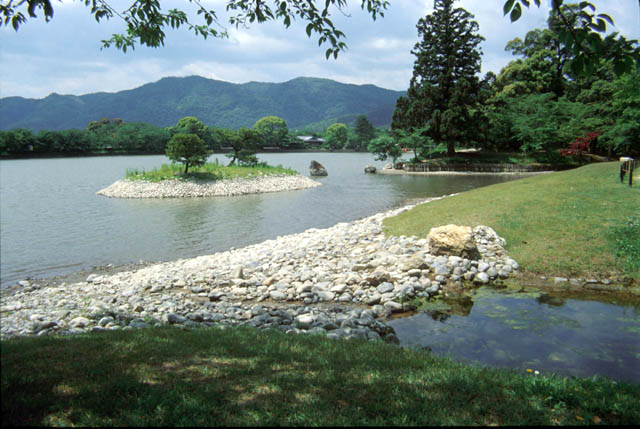
Daikaku-ji

Kenroku-en
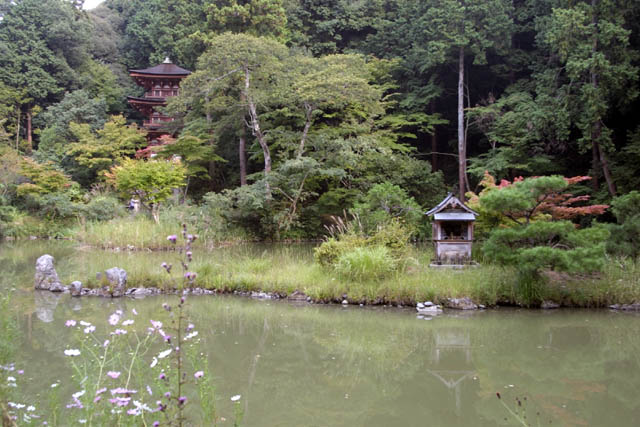
Joruri-ji
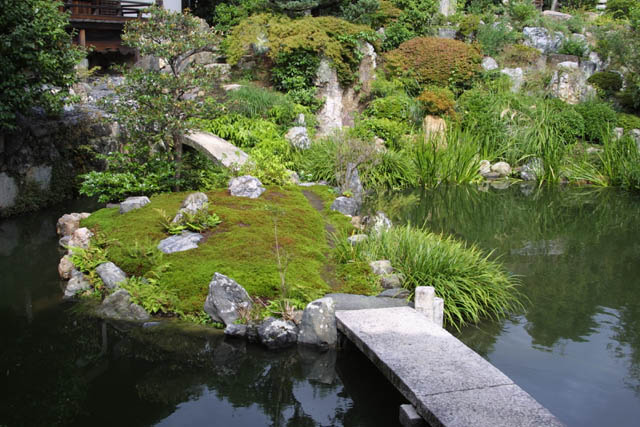
Hoshun-in
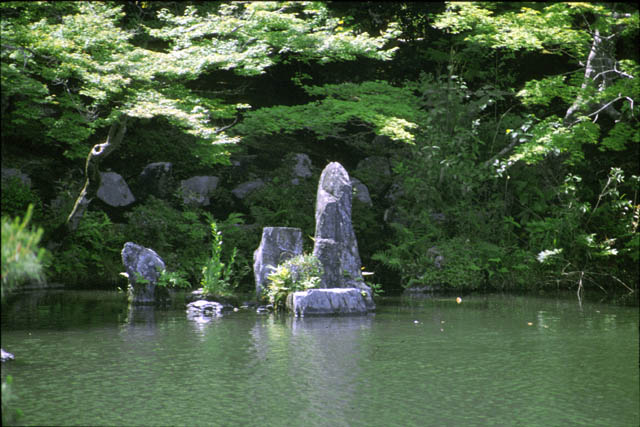
Tenryu-ji

Tenryu-ji (2)
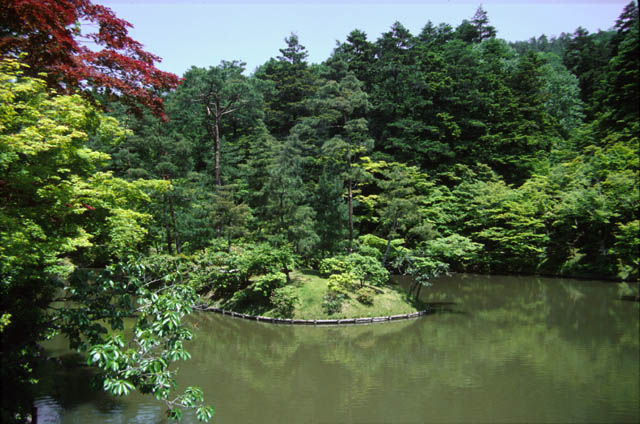
Shugaku-in
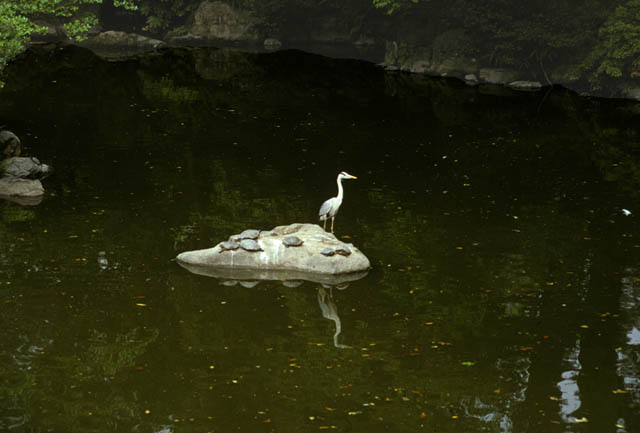
Shusui-tei
